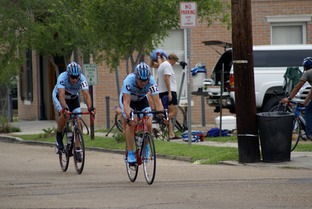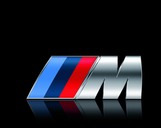
Tech talk will feature the latest bike trends with VJ Liberto and Todd Herbet. Want to see the technology they discuss in greater detail? Visit our sponsor, the Bicycle Connection, for a closer look.
VJ: Bike Fit Theory
I am someone who looks at lots of pictures of pro bikes on the internet. Sometimes you can get hard numbers on bike and rider measurements. It's rare to see a 100mm stem, most times you see 130, 140 and rarely more. Manufacturers seem to be making frames with tall seat post mast so the front triangle (top tube/down tube/seat tube) can be as compact as possible. Small frame sizes have smaller triangles, but as frame sizes get larger, so does the triangle. The smaller the triangle, the frame will have a rigid and solid feel,which is something that bigger cyclists and sprinters look for. As long as seat height and bar reach are where they should be, who cares what the top tube length is. I usually ride a 58 frame but my Look 595 is a 55 and it is rock solid, stiff, and stable (even at 50mph on a downhill). Think about it before your next build! Check back next week for a new trend of more cleat setback.
VJ: Ceramic Bearings
If you spend lots of time on the internet like I do, you can't help but notice all the hype around ceramic bearings. Claims like 40 to 80 seconds off of a 40k with only ceramic wheel bearings are common. I managed to work ceramics into some of my bikes in the way of wheel bearings and bottom brackets. They do feel very smooth and they do spin free, but the big question is if they free up watts under load? The two main type of ceramic bearings are full ceramic(ceramic ball and ceramic race) and ceramic hybrid (ceramic ball and steel race).Full ceramic cost as much as $200 or more per bearing (most rear wheels have 4 or more bearings), which puts them out of reach for me and most people. Hybrid bearings are everywhere for around $60 each. The main question for hybrid bearings is if they are better than $8 quality steel bearings? Ceramic balls are more round than steel balls, so they should roll with less friction. They are also a lot harder than steel, so they should last longer and not develop flat spots that cause the balls to slide and not roll,sliding is not good! Ceramics are about half the weight of steel and need little or no lubrication. My Hed3 wheels are going two years with out a drop of lubrication.It is said that wheel bearings contribute less then 5% to total drag, and the drive-train about 15% to total drag; if this is so then upgrading the bottom bracket makes more sense to me. It seems you should first address the things that rob the most power. Ceramics have now made it into headsets and also to derailleur pulley wheels. Sometimes we upgrade without any way to verify any speed benefit, sometimes it's just a matter of faith.It always comes down to how much do we want to spend for speed?
